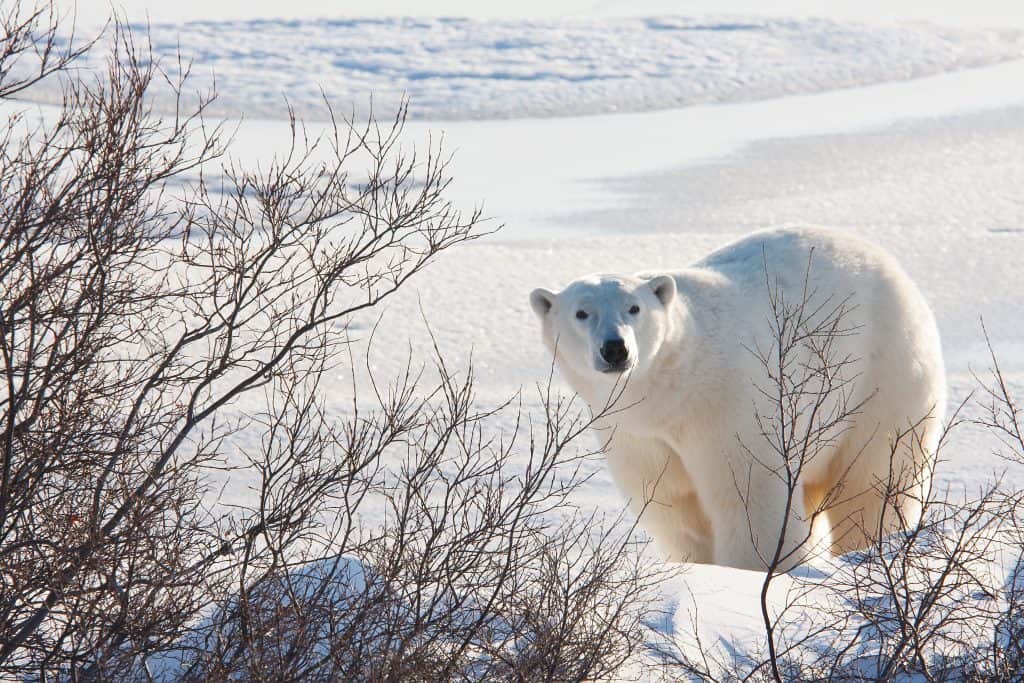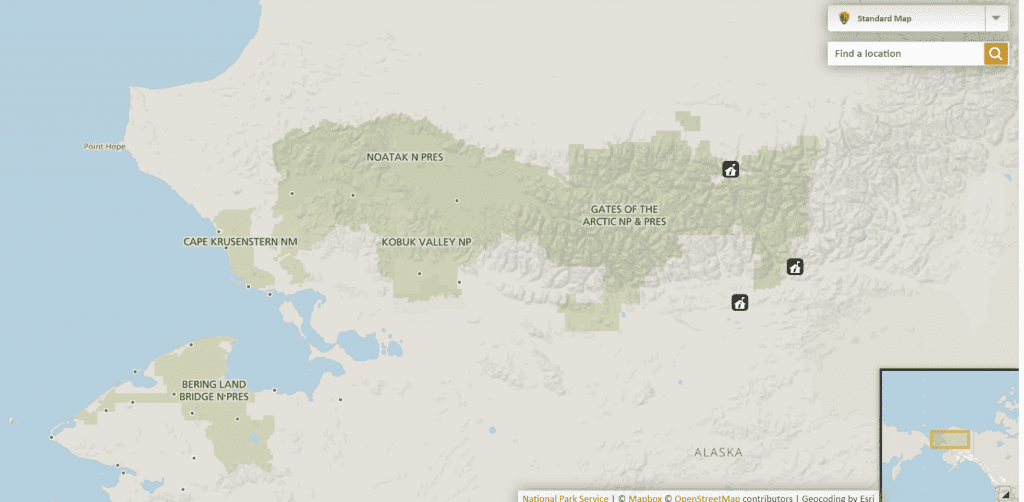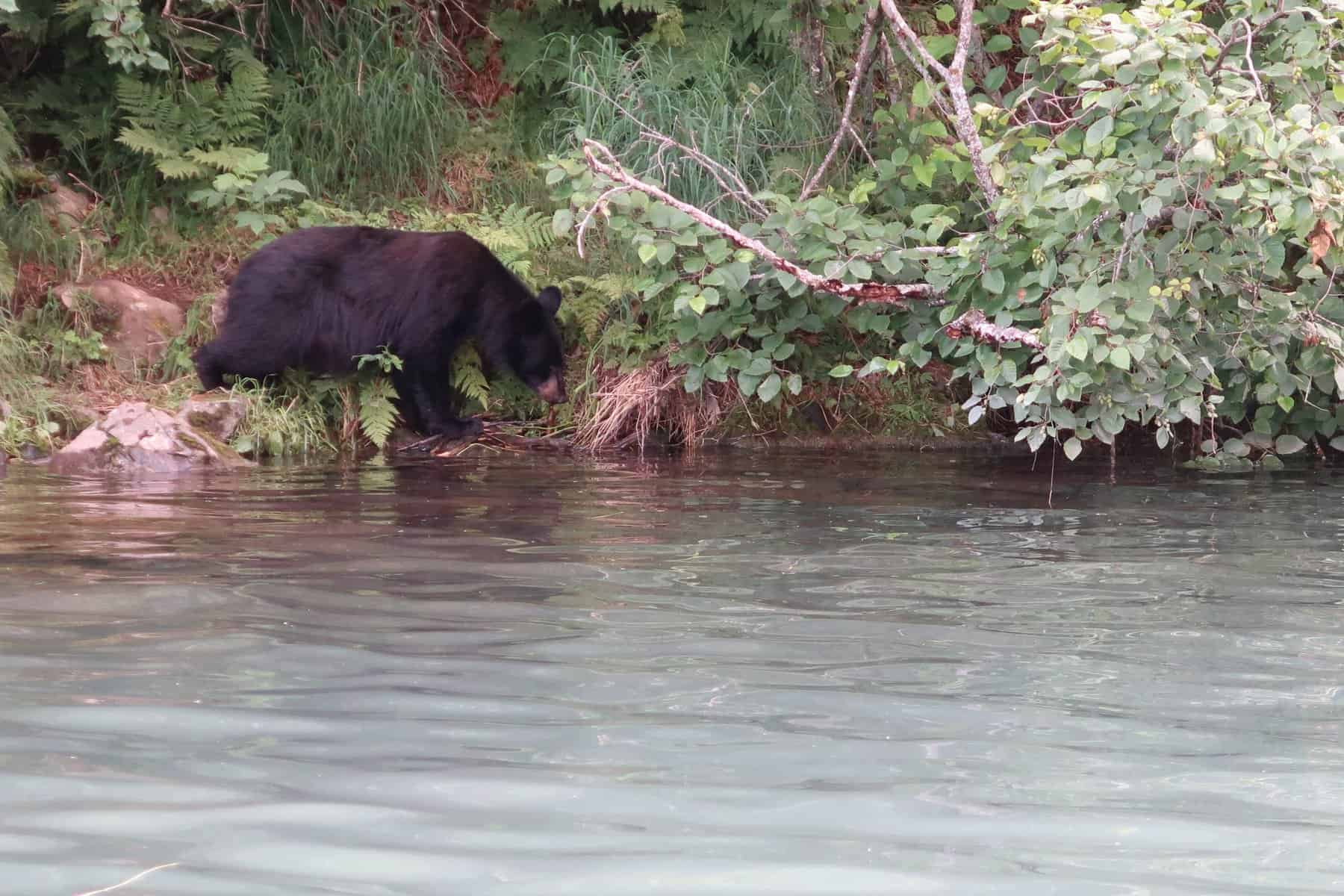Bears are a favorite amongst animal lovers. Many who spend time visiting our National Parks actively seek opportunities to view these magnificent creatures in their natural habitats. Like many apex predators, however, bears populations face challenges. In this article, we will discuss the types of bears found in the United States National Parks and some of our bear conservation efforts and initiatives to sustain them.
Polar bears, brown bears, and black bears, all found in the United States, are members of the Ursidae family, but they have some distinct differences in their physical appearance, behavior, and habitat.
Polar Bears

Polar bears are the largest of the three bears and are adapted to living in the Arctic region. They have white fur, which provides camouflage in the snow and ice, and a layer of blubber to keep them warm in the frigid temperatures. They are excellent swimmers and can swim for long distances to hunt for their primary food source, seals.
Polar bears are solitary animals and are typically only found in areas where there is sea ice. Thus, the only state in the United States where they can be found is Alaska. The two National Park Units that the NPS reports polar bear habitats are Cape Krusenstern National Monument and Bering Land Bridge National Preserve. Although Kobuk Valley National Park is adjacent, the National Park Service does not report polar bears residing in this area.

Polar bears are considered a threatened species, and as a result, several conservation efforts have been put in place to help protect them. The United States Geological Survey (USGS) has been conducting research on polar bear populations to better understand their habitat requirements and behavior. The USGS is also involved in monitoring polar bear populations, studying their diet, and assessing the effects of climate change on their populations.
The Polar Bear Conservation Management Plan is a comprehensive strategy aimed at protecting and preserving polar bear populations in their natural habitat. The plan involves a range of actions, including habitat protection, research, monitoring, and education. One of the key objectives of the plan is to reduce the impact of climate change on polar bear populations by limiting greenhouse gas emissions and promoting sustainable practices.
The plan also seeks to minimize human-polar bear conflicts by improving waste management and enforcing regulations on hunting and other activities that may harm polar bears. By implementing this management plan, governments, conservation organizations, and local communities can work together to ensure the long-term survival of polar bears and their unique ecosystem.
Brown Bears

Brown bears, often known as “grizzly bears” in inland parks, are found in many North American National Parks. They have brown or black fur with a distinctive hump on their shoulders. Grown brown bears are larger than than black bears.
Brown bears are omnivores and have a diet that may include plants, berries, insects, small mammals, and fish. Their diets are dependent upon their location and the food sources available to them. They are also excellent swimmers and climbers and are known for the mothers’ fierce, protective nature towards their cubs.
For the ultimate brown bear viewing experience, visit Brooks Falls at Katmai National Park. Additionally, Lake Clark National Park offers great bear-viewing opportunities. If you can’t get to the mountains right now, consider following THIS “bear cam,” and keep a close eye on your favorites. These bears are so famous that they are named, and many books have been written to record their stories and histories!
Brown bears are not considered endangered, but their populations have been significantly impacted by habitat loss and fragmentation. Conservation efforts for brown bears include habitat preservation, monitoring of populations, and public education.
The National Park Service works to protect brown bear habitats in National Parks such as Katmai, Denali, and Yellowstone. Additionally, organizations like the Alaska Wildlife Conservation Center work to rehabilitate and release orphaned or injured brown bears back into the wild.
Washington’s North Cascades National Park currently has conservation groups working towards restoring the native brown bear population of the regions.
The North Cascades National Park bear reintroduction efforts are a crucial part of the park’s ecosystem restoration plan. Historically, grizzly bears were found throughout the North Cascades, but by the mid-20th century, they had disappeared due to hunting and habitat loss.
In 2017, the National Park Service announced plans to reintroduce grizzly bears into the North Cascades ecosystem, with the goal of restoring the natural balance and biodiversity of the region. The reintroduction efforts involve extensive research and planning including identifying suitable habitats, assessing potential risks and benefits, and engaging with local communities and stakeholders.
While the process of reintroducing grizzly bears is complex and may take several years, it is an essential step towards ensuring the long-term survival of this iconic species and protecting the unique ecosystem of the North Cascades National Park. For further information on those efforts, visit the park visitor center or click HERE for more reading.
Black Bears

Black bears are found in North America and have black or dark brown fur. They are smaller than brown bears and have a less pronounced shoulder hump. Black bears are omnivores and have diets that may include plants, berries, nuts, insects, fish, and small mammals. They are good climbers and can be found in a variety of habitats, including forests, mountains, and swamps.
Black bears are the most abundant bear species in North America, but their populations have also been impacted by habitat loss and human encroachment. Conservation efforts for black bears include habitat preservation, research on their behavior and diet, and public education.
The Black Bear Conservation Committee works to increase public awareness about the importance of black bears and their habitats. Additionally, state wildlife agencies have implemented hunting regulations to ensure sustainable black bear populations.
In summary, polar bears are adapted to living in the Arctic, while brown and black bears are found in other regions. Due to necessary genetic adaptations, characteristics within each bear species can be vastly different based on region. For those with deeper interests, we suggest you study the differences between the black bears of Big Bend verses the black bears of Yellowstons. Study the differences, and there are many, between the brown bears of Katmai and the Rocky Mountain grizzlies.
Conservation efforts for each of these bear species include habitat preservation, population monitoring, research, and public education. These efforts are crucial to ensure the survival of these iconic and important species.
Bears are important symbols within the North American culture. They are beloved by so many. But as such adored and important apex predators, it is essential that we continue to invest our efforts in supporting their healthy survival. We invite you to continue your learning journey within and beyond our NPS units!

